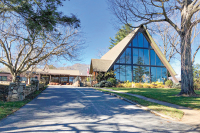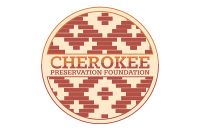Scotland pays homage to its writers
 With literary tours, literary pub crawls, monuments, plaques, and museums, Scotland honors her writers.
With literary tours, literary pub crawls, monuments, plaques, and museums, Scotland honors her writers.
Let’s start my literary tour of Edinburgh with the lounge of the Radisson Blu, a castle-like building five minutes from Waverly Station and dab in the middle of the Royal Way. This establishment definitely made a dent in my bank account, even when splitting the cost with my friend John, who today headed north on a train to see the Highlands. Yet there are advantages: everything I want to see is no more than a 10-minute walk, the room is spacious, I don’t need a mechanical engineering degree to turn on the shower, and at 5 a.m. the lounge is empty, lovely, and perfect for writing.
On the walls of this lounge are plaques in the shape of footsteps containing quotations by authors associated with Edinburgh, noted writers like Robert Burns, Robert Louis Stevenson, Alexander McCall Smith, and J.K. Rowling. Here Rowling reminds us, for instance, “It does not do to dwell in dreams and forget to live.”
The morning passes with writing, coffee, a wonderfully hot shower, and then a long stroll once again down the Royal Way, poking around the shops while I wait for the National Library of Scotland to open. On the Royal Way are statues of David Hume and Adam Smith, tributes to the intellectual vitality of the city in the eighteenth century, when many referred to Edinburgh as the “Athens of the North.” Both the university and the medical school made this city of hills one of the centers of thought in the world at that time.
Like many of the surrounding buildings, the National Library is made of stone dirtied by years of pollution. Inside the entrance, a large sign states that the library houses 14 million books, hundreds of thousands of magazines, newspapers, and phone books, and some 30,000 films. Directly inside is a sparkling little gift shop and a café, which a reference library tells me is “one of the unknown jewels of the city.” In the exposition room this summer the theme is “Four Hundred Years of Scottish Cooking,” with displays including explanatory placards describing everything from the use of barley water to the importance of oatmeal in the Scottish diet. Along with various cooking implements, the exhibition cases contain dozens of cookbooks, all written in pen.
In a nearby suite of rooms is a small sampling of the John Murray Archives, perhaps the most precious collection of this fine library. John Murray Publishers put out books by authors like Lord Byron and David Livingston, along with some 16,000 others. The library owns a mass of letters between this publisher and its authors, along with all manner of artifacts. Of particular interest were the anecdotes of Lord Byron and Lady Caroline Lamb, who famously called Byron “mad — bad — and dangerous to know.”
Related Items
On my last stop of the day, I went to the nearby Writer’s Museum, which honors Robert Burns, Walter Scott, and Robert Louis Stevenson. In this 400-year-old building, not so long ago a private home, are scores of photographs and paintings of these three authors, some of their books, their personal belongings — my favorite exhibit here was the recreation of Walter Scott’s dining room before his success — and other mementoes. After reading of Scott’s bankruptcy in the final years of his life, I found poignant his deathbed advice to his son-in-law J.G. Lockhart: “My dear, be a good man, be virtuous, be religious, be a good man. Nothing else will give you any comfort when you lie here.”
In one part of the exhibit is a beautiful burnished bedroom press that once sat in Stevenson’s boyhood room. William Brodie, who built this piece of furniture, was an Edinburg government official who led a double life by being a burglar at night, a crime for which he was eventually hung. This story haunted the young Stevenson, and I wondered whether this idea of a hidden life, a life composed of both good and evil, had helped inspire him to write Dr. Jekyll and Mr. Hyde.
All three of these writers died in tragic circumstances: Burns at 37, possibly from drink; Scott a bankrupt; Stevenson from the lifelong problems of the lungs. With their deaths, particularly the death of Sir Walter Scott, all of Scotland went into mourning.
Later that day, strolling the streets, I also happened by one of the Edinburg coffee shops, The Elephant House, in which J.K. Rowling wrote parts of her first Harry Potter novel. Not a native of the city, Rowling had come here to live with her sister after the death of their mother and to escape a troubled marriage. In this café, in Nicholson’s, which was owned by her brother-in-law, and in others, she wrote the first Harry Potter book.
Scotland has already claimed Rowling as one of her children. One of these days, I am certain, yet another statue will grace the cobbled streets of Edinburgh.
Last week: Bronte sisters part and parcel of the magic of Haworth









